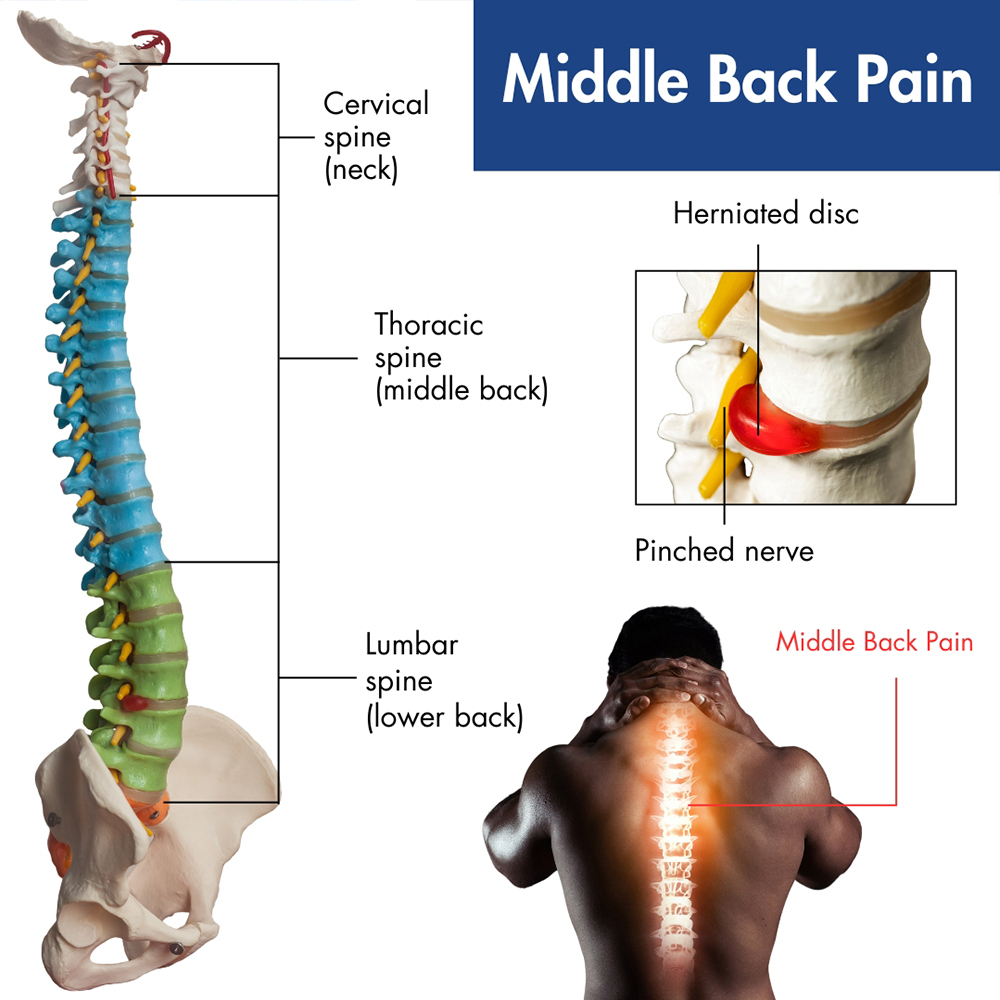We’re pleased to announce that Pain Physicians of Wisconsin is now Pro Spine Pain.
We’re pleased to announce that Pain Physicians of Wisconsin is now Pro Spine Pain.
 While mid-back pain may not be as prevalent as discomfort in the upper or lower back, its impact on one’s life is equally significant and debilitating. The inability to twist or turn without pain can hinder your lifestyle and participation in your favorite activities. Mid-back pain imposes limitations on normal daily activities, affecting overall well-being. Relief is readily available in Wisconsin at Pro Spine & Pain, where five convenient locations offer accessible treatment options. Don’t endure unnecessary discomfort when solutions are within reach—call today to return to your normal routines.
While mid-back pain may not be as prevalent as discomfort in the upper or lower back, its impact on one’s life is equally significant and debilitating. The inability to twist or turn without pain can hinder your lifestyle and participation in your favorite activities. Mid-back pain imposes limitations on normal daily activities, affecting overall well-being. Relief is readily available in Wisconsin at Pro Spine & Pain, where five convenient locations offer accessible treatment options. Don’t endure unnecessary discomfort when solutions are within reach—call today to return to your normal routines.
Middle-back pain is less common than lower back pain, upper back pain, or neck pain. This pain is typically associated with the region between the shoulder blades spanning from the neck to the bottom of the ribcage, and discomfort in this part of the body can still pose challenges in daily life, particularly for otherwise healthy individuals. Chronic mid-back pain may result if the underlying condition causing it remains undiagnosed or if the individual fails to seek prompt treatment. The irritation can manifest as a sharp stabbing sensation or a dull, burning ache, accompanied by tightness and stiffness in the back muscles.
For effective relief, it is essential to have a thorough examination by a pain management specialist. The expert doctors at Pro Spine & Pain in Wisconsin will tailor a treatment plan to your specific needs.
Seeking medical attention becomes urgent if middle-back pain is accompanied by:
Back pain can arise from various diseases and medical conditions. While it is not very common, it’s essential to be aware of potentially serious issues such as pancreatitis or pancreatic cancer that may manifest as middle-back pain, particularly on the left-hand side. A kidney stone or other kidney problems could also trigger mid-back pain on the right side.
When seeking treatment from your Wisconsin back pain specialist, provide detailed information about the location and intensity of your pain.
Other medical conditions associated with pain in the thoracic spine area include:
Additional factors contributing to symptoms include:
The appropriate middle-back pain treatment for you will depend on the precise cause of your discomfort. Your pain management specialist in Wisconsin possesses a variety of tools and techniques to address the root of your pain. They will typically start with conservative, non-invasive treatment options.
To counter pain of a more minor nature, your doctor may suggest over-the-counter painkillers or prescribe a stronger medication for severe pain. Applying heat or ice to the affected area is also recommended to alleviate discomfort by reducing inflammation. Referral to a physical therapist might also be recommended to prescribe appropriate exercises. However, for individuals who are enduring chronic back pain in this area, more comprehensive treatment approaches may be necessary.
The spinal cord stimulator stands as a relatively recent technological advancement offering improved management of chronic mid-back pain. Surgically inserted beneath your skin, the device features wires connecting to the nerves of your spinal cord. When activated, it emits a mild electrical pulse that disrupts the pain signals received by your brain.
The initial phase may involve a trial device, which is not surgically implanted but worn close to your body. If the treatment proves effective, the stimulator device is then implanted. You will have control over the stimulator device through a remote control. Depending on your model, the spinal cord stimulator can remain operational for over 10 years.
Considering surgery may be needed in order to resolve extreme cases of mid-back pain, adopting preventive measures to safeguard your spine is strongly advised by doctors and physical therapy specialists.
Consider the following steps to prevent problems with this condition:
The following five exercises are commonly recommended for mid-back pain. Consult with your back pain specialist or physical therapist to ensure you perform these movements correctly so that you avoid making your condition worse.
Remember, it’s crucial to perform these exercises with proper form and to start with gentle movements. If you experience any pain or discomfort, stop immediately and consult with a healthcare professional. They can provide personalized advice based on your specific condition.
It is essential to have your mid-back pain evaluated by a medical professional. Contact Pro Spine & Pain for a consultation today.

Thomas Stauss, MD, completed both his undergraduate and medical studies at the esteemed University of Wisconsin in Madison. Dr. Stauss values having access to a wide array of cutting-edge treatment options, ensuring effective relief for his patients' discomfort and a significant enhancement in their quality of life. More specifically, he specializes in utilizing implanted devices to manage chronic pain. Dr. Stauss’s primary objective is to uphold the dignity of each patient while delivering ethical and professional services.
More about Dr. Stauss